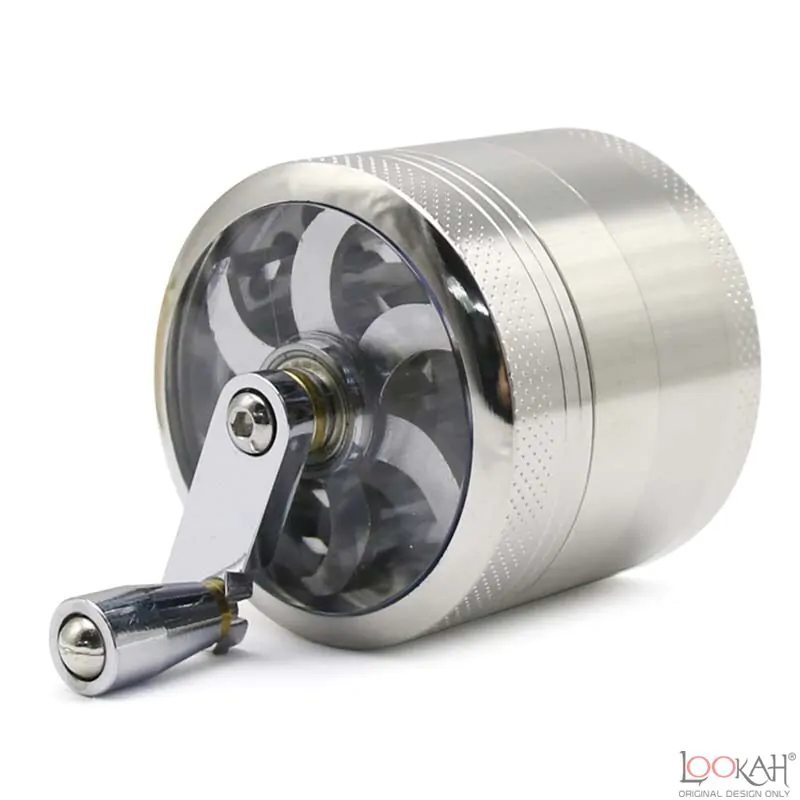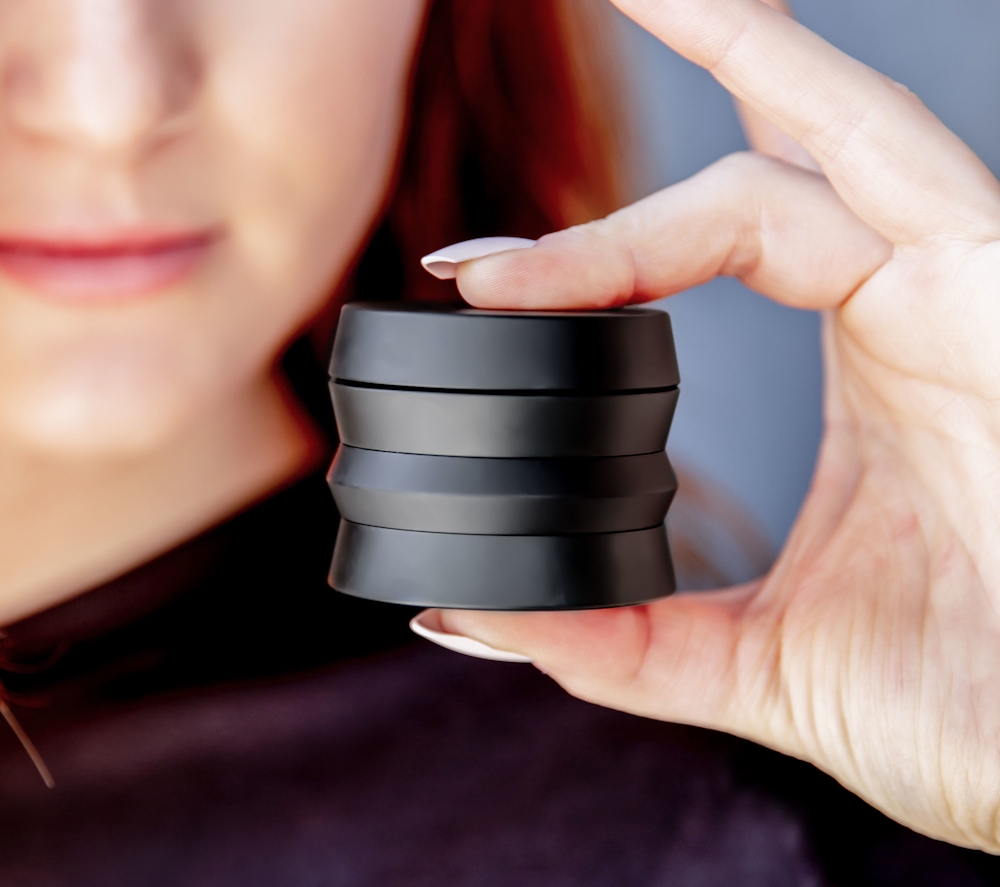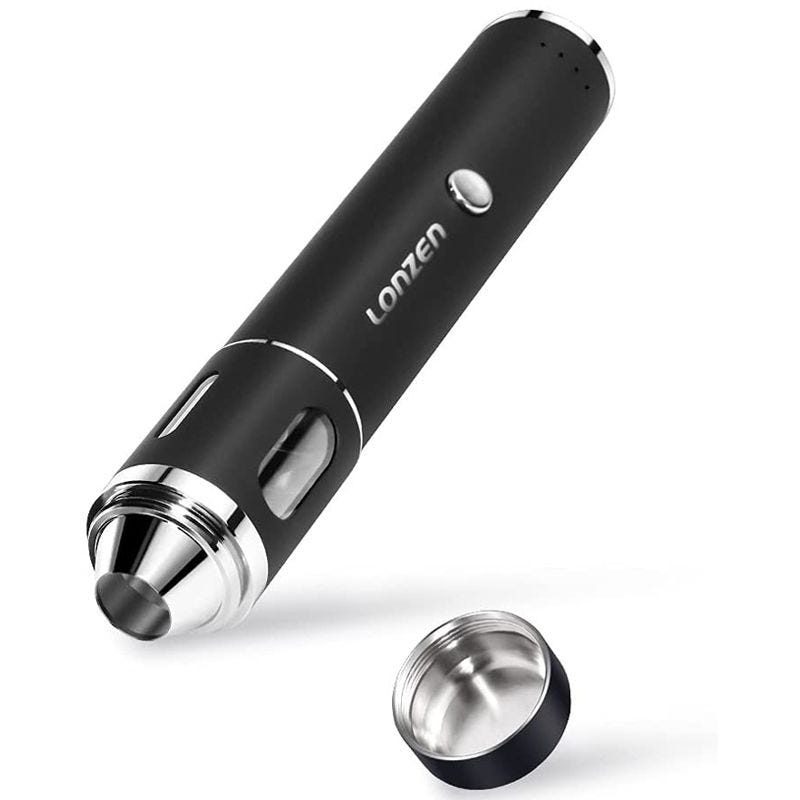Herb Grinder Ergonomics: Making Grinding Easier
Welcome to our blog post on herb grinder ergonomics! Grinding herbs can be a tedious and time-consuming task, but with the right tools, it can become a breeze. In this post, we will delve into the world of ergonomic herb grinders and explore how they can make your grinding experience easier and more enjoyable.
Whether you're a seasoned herb enthusiast or just starting your herb grinding journey, this blog post is designed to provide you with valuable insights and practical tips. Get ready to elevate your grinding experience and make it easier than ever before with the right ergonomic herb grinder. Let's dive in!
Understanding the Importance of Herb Grinder Ergonomics
When it comes to grinding herbs, many people may overlook the importance of ergonomics. However, understanding the significance of herb grinder ergonomics is essential for a more efficient and comfortable grinding experience.
Ergonomics refers to the design and arrangement of tools and equipment to fit the user's needs, comfort, and efficiency. In the case of herb grinders, ergonomic features are incorporated to enhance usability, reduce strain, and optimize the grinding process.
One of the key benefits of ergonomic herb grinders is their ability to minimize hand and wrist fatigue. Traditional grinders often require significant manual effort, leading to discomfort and potential strain on these areas. Ergonomic grinders, on the other hand, are designed with features that prioritize user comfort and ease of use.
By improving the ergonomics of a grinder, manufacturers aim to create a more user-friendly product that allows for effortless grinding. This is particularly important for individuals who grind herbs frequently or in large quantities. With an ergonomic grinder, you can grind herbs with less effort and strain, making the entire process more enjoyable and efficient.
Another aspect to consider is the impact of ergonomics on the grinding results. Herb grinders with ergonomic designs often provide a more consistent and uniform grind. This is achieved through features such as optimized blade placement, efficient grinding mechanisms, and easy-to-use controls. The result is a finer and more evenly ground herb, enhancing the flavor, aroma, and potency when used in cooking or other applications.
Furthermore, ergonomic grinders are typically designed with user safety in mind. They feature protective measures to prevent accidental injuries, such as finger guards, secure lids, and non-slip bases. These safety features not only protect the user but also ensure that the herbs are contained securely within the grinder during the grinding process.
Overall, understanding the importance of herb grinder ergonomics is crucial for maximizing efficiency, comfort, and safety during the grinding process. Whether you're an occasional user or a professional chef, investing in an ergonomic grinder can greatly enhance your overall experience and yield better results in terms of grind consistency and usability.
Types of Ergonomic Herb Grinders
When it comes to ergonomic herb grinders, there are various types available in the market, each with its own unique features and benefits. Understanding the different types of ergonomic grinders will help you make an informed decision based on your specific needs and preferences. Let's explore the various types of ergonomic herb grinders in more detail.
Manual Herb Grinders

Manual herb grinders are the most traditional and commonly used type of grinder. They are typically compact and consist of two or more interlocking pieces. The top piece usually has sharp teeth or pegs that grind the herbs when twisted or rotated against the bottom piece.
These grinders often feature a magnetic closure mechanism to keep the pieces securely together during the grinding process. Some manual grinders also have a kief catcher, which is a separate chamber for collecting the potent resinous crystals that fall off during grinding.
One of the advantages of manual herb grinders is their simplicity and ease of use. They require no external power source and can be operated with minimal effort. Manual grinders also offer a certain level of control over the grind size, allowing you to customize it according to your preference.
Electric Herb Grinders

For those looking for a more convenient and effortless grinding experience, electric herb grinders are a popular choice. These grinders are powered by electricity and feature motor-driven blades or burrs that do the grinding work for you.
Electric grinders are known for their speed and efficiency, significantly reducing the time and effort required for grinding. They often have a push-button operation and can produce a consistent grind size with minimal manual input.
The main advantage of electric herb grinders is their convenience. They are particularly useful for individuals with limited hand strength or mobility issues, as they require minimal physical exertion. However, it's important to note that electric grinders may be bulkier and require a power source, making them less portable than their manual counterparts.
Handheld Herb Grinders

Handheld herb grinders combine the convenience of manual grinders with some additional features for enhanced ergonomics. These grinders typically have a cylindrical shape that fits comfortably in the palm of your hand, allowing for a more secure and controlled grip during the grinding process.
Handheld grinders often feature a crank or handle attached to the top, which provides leverage and makes the grinding motion easier and more efficient. This design minimizes strain on the hand and wrist, allowing for prolonged use without discomfort.
These grinders may also incorporate other ergonomic features such as non-slip grips, easy-to-turn handles, and multiple chambers for separating different types of herbs or collecting kief.
Travel-Friendly Herb Grinders

For those who are always on the go, travel-friendly herb grinders offer a compact and portable solution. These grinders are designed with convenience and portability in mind, allowing you to grind herbs anywhere, anytime.
Travel-friendly grinders are often smaller in size, making them easy to carry in pockets, purses, or backpacks. They may feature a compact design with fewer pieces, ensuring quick and hassle-free assembly and disassembly.
While these grinders may sacrifice some features found in larger grinders, they still offer an ergonomic design that allows for efficient grinding on the go.
Related Article: Benefits of Single-Handed Herb Grinding
Specialty Herb Grinders

In addition to the types mentioned above, there are also specialty herb grinders catering to specific needs or preferences. These grinders may have unique features or functionalities that set them apart from traditional grinders.
For example, some specialty grinders are designed specifically for grinding specific herbs or spices, such as coffee or pepper. They may have adjustable settings or specialized blades to achieve the desired grind consistency.
Other specialty grinders may incorporate additional features such as storage compartments, built-in scales, or even Bluetooth connectivity for smart functionality.
It's important to explore the various types of ergonomic herb grinders available and consider your specific requirements before making a purchase. In the next section, we will delve deeper into the benefits of each type and help you choose the right grinder for your needs.
Related Article: Herb Grinders and Sustainable Convenience
How to Use an Ergonomic Herb Grinder
Using an ergonomic herb grinder properly is essential for achieving the best results and maximizing the benefits of your grinder. In this section, we will guide you through the step-by-step process of using an ergonomic herb grinder effectively. From preparation before grinding to post-grinding care, we'll cover all the important aspects to ensure a seamless and efficient grinding experience.
Preparation Before Grinding
- Select the herbs: Start by choosing the herbs you want to grind. Ensure that they are dry and free from any moisture, as wet herbs can affect the grinding process and potentially damage your grinder.
- Break down the herbs: If your herbs are in large pieces, break them down into smaller, more manageable sizes. This will help facilitate the grinding process and ensure a more consistent grind.
- Clean the grinder: Before using your grinder, make sure it is clean and free from any residue or debris. This will help maintain the performance and longevity of your grinder.
Proper Grinding Techniques
- Assemble the grinder: If your grinder consists of multiple pieces, securely assemble them according to the manufacturer's instructions. Ensure that all the components fit snugly together.
- Load the herbs: Open the grinder chamber and place the herbs onto the teeth or pegs of the grinding mechanism. Avoid overfilling the chamber, as this can hinder the grinding process and make it less effective.
- Grind in a steady motion: Hold the grinder firmly and begin rotating or twisting the top piece in a steady motion. Apply gentle pressure to ensure consistent grinding. Take your time and avoid rushing the process, as this can lead to an uneven grind.
- Check the grind consistency: After a few rotations, periodically check the grind consistency by opening the grinder and inspecting the herbs. If you prefer a finer grind, continue grinding for a bit longer. For a coarser grind, stop grinding sooner.
- Tap or shake the grinder: To ensure all the ground herbs are collected in the bottom chamber, tap or gently shake the grinder. This will help dislodge any remaining herb material from the grinding teeth and ensure a complete collection.
Post-Grinding Care of the Grinder
- Empty the grinder: Once you have finished grinding, open the grinder and empty the ground herbs into a suitable container or directly into your desired application.
- Clean the grinder: After each use, it is important to clean your grinder to remove any residue or buildup. Use a small brush or toothbrush to gently scrub the teeth, chambers, and other parts of the grinder. You can also use isopropyl alcohol or specialized grinder cleaning solutions for a more thorough cleaning.
- Dry the grinder: After cleaning, ensure that all parts of the grinder are completely dry before reassembling or storing it. Moisture can lead to rust or damage the grinder over time.
By following these proper grinding techniques and post-grinding care, you can ensure a consistent and efficient grinding experience with your ergonomic herb grinder. In the next section, we will explore the essential maintenance practices to keep your grinder in optimal condition.
Maintaining Your Ergonomic Herb Grinder
Proper maintenance of your ergonomic herb grinder is crucial for keeping it in optimal condition and ensuring its longevity. In this section, we will discuss the essential maintenance practices that will help you maintain your grinder's performance and functionality.
Cleaning Your Grinder
Regular cleaning is essential to prevent residue buildup and maintain the efficiency of your grinder. Here are the steps to effectively clean your ergonomic herb grinder:
- Disassemble the grinder: Start by taking apart the different components of your grinder. Remove the top piece, bottom piece, and any additional chambers or screens.
- Remove residue and debris: Use a small brush, toothbrush, or toothpick to gently remove any residue or debris from the teeth, chambers, and screens. Pay attention to hard-to-reach areas to ensure a thorough cleaning.
- Soak in cleaning solution (optional): If your grinder is particularly dirty or has stubborn residue, you can soak the disassembled parts in a cleaning solution. Isopropyl alcohol or specialized grinder cleaning solutions are commonly used for this purpose. Follow the manufacturer's instructions for proper dilution and soaking time.
- Scrub and rinse: After soaking (if applicable), scrub the parts with a brush or toothbrush to remove any remaining residue. Rinse the parts thoroughly with warm water to remove any cleaning solution or residue.
- Dry the parts: Ensure that all parts are completely dry before reassembling the grinder. You can air-dry them or use a clean cloth or paper towel to speed up the drying process.
Regular Inspection and Maintenance
In addition to cleaning, regular inspection and maintenance are essential for keeping your ergonomic herb grinder in optimal condition. Here are some important maintenance practices to follow:
- Check for wear and tear: Regularly inspect the teeth, chambers, and other components of your grinder for any signs of wear or damage. Look for dull or broken teeth, loosened parts, or any other issues that may affect the grinder's performance.
- Lubricate moving parts (if applicable): Some grinders may have moving parts, such as hinges or rotating mechanisms. If necessary, apply a small amount of food-grade lubricant to ensure smooth operation. Be sure to use a lubricant that is safe for use with herbs and is compatible with the grinder's materials.
- Tighten loose parts: Over time, certain parts of your grinder may become loose due to regular use. Check for any loose screws or connections and tighten them appropriately to maintain stability and functionality.
- Address rust or corrosion: If you notice any signs of rust or corrosion on your grinder, it is important to address it promptly. Use a soft cloth or abrasive pad to gently scrub away the rust. If necessary, you can also use a rust remover product or a mixture of baking soda and water to aid in the cleaning process.
Storing Your Grinder Properly
Proper storage is crucial for protecting your ergonomic herb grinder when it's not in use. Here are some tips for storing your grinder:
- Clean and dry your grinder before storage: Ensure that your grinder is clean and dry before storing it. This will prevent the growth of mold or mildew and help maintain the integrity of the grinder's materials.
- Use a protective case or pouch: Consider using a protective case or pouch to store your grinder. This will provide an extra layer of protection against dust, dirt, and potential damage.
- Store in a cool, dry place: Choose a cool and dry location to store your grinder. Avoid areas with high humidity, as moisture can lead to rust or other damage.
- Avoid excessive force or pressure: When storing your grinder, avoid placing heavy objects on top of it or subjecting it to excessive force or pressure. This will prevent any potential deformation or damage to the grinder's components.
By following these maintenance practices and storing your grinder properly, you can ensure its longevity and optimal performance. In the next section, we will help you choose the best ergonomic herb grinder based on your specific needs.
Related Article: The Future of Herb Grinding Technology: Innovations and Trends
Choosing the Best Ergonomic Herb Grinder for You
Choosing the best ergonomic herb grinder for your needs is essential to ensure a seamless and enjoyable grinding experience. In this section, we will guide you through the process of selecting the right grinder based on your preferences, requirements, and budget.
Assessing Your Specific Needs
Before diving into the different grinder options, it's important to assess your specific needs and preferences. Consider the following factors:
- Frequency of use: How often do you plan to use the grinder? If you use herbs frequently, you may benefit from a more durable and efficient grinder.
- Portability: Do you need a grinder that you can easily carry with you? If you travel often or prefer to grind herbs on the go, a compact and travel-friendly grinder might be the best choice.
- Grinding capacity: Are you grinding herbs in small or large quantities? If you frequently grind larger amounts of herbs, a grinder with a larger chamber may be more suitable for you.
- Grind consistency: What type of grind consistency do you prefer? Some grinders offer adjustable settings to customize the grind size according to your preference.
- Additional features: Are there any specific features that you value? Consider features such as kief catchers, multiple chambers, or specialized grinding mechanisms that align with your requirements.
Understanding Different Grinder Materials
Grinders are made from various materials, each with its own advantages and considerations. The most common grinder materials include:
- Aluminum: Aluminum grinders are durable, lightweight, and resistant to corrosion. They are a popular choice due to their affordability and ease of maintenance.
- Stainless Steel: Stainless steel grinders offer durability and longevity. They are resistant to rust and provide a sleek and modern look. However, they are typically more expensive than aluminum grinders.
- Acrylic: Acrylic grinders are lightweight, affordable, and often come in vibrant colors. However, they may not be as durable as metal grinders and can be prone to scratching or cracking over time.
Related Article: Aircraft-Grade Aluminum Crafting Herb Grinders
Price vs. Quality Considerations
When choosing an ergonomic herb grinder, it's important to strike a balance between price and quality. Keep the following considerations in mind:
- Budget: Determine your budget range before exploring grinder options. This will help narrow down your choices and prevent overspending.
- Quality and durability: Consider investing in a grinder that is built to last and made from high-quality materials. While it may be more expensive upfront, a durable grinder will save you money in the long run.
- Warranty or guarantees: Check if the grinder comes with any warranty or guarantees. This can provide peace of mind and protection in case of any manufacturing defects or issues.
- User reviews: Read user reviews and ratings to get an idea of the grinder's performance, durability, and overall customer satisfaction. This can help you make an informed decision.
By considering your specific needs, understanding different grinder materials, and balancing price and quality, you can choose the best ergonomic herb grinder that suits your requirements.
Related Article: Expert Tips for Grinding Herbs Like a Pro
Get the Best Grinding Experience with Ergonomic Herb Grinders!
An ergonomic herb grinder can greatly enhance your grinding experience by providing comfort, efficiency, and consistent results. Whether you opt for a manual grinder, electric grinder, handheld grinder, travel-friendly grinder, or a specialty grinder, remember to properly maintain and care for your grinder to maximize its lifespan and performance.
Related Article: Understanding Herb Grinder Anatomy: Inside and Out


Leave a comment
Please note, comments must be approved before they are published